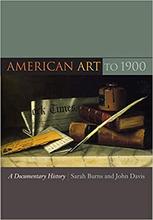More about George Inness
- All
- Info
- Shop
Works by George Inness

Contributor
Before Bob Ross came into our lives with happy little trees and beating the devil out of his brush, there was George Inness.
Regarded as the shining example of the best that America had to offer in landscape painting in his prime, his career spanned forty years and over a thousand works. His work signaled a shift in American landscape styles from the frontier wonders of the Hudson River School to softer, intimate, and emotionally evocative locales that displayed man’s harmony with nature. He was an avid traveler, visiting many locales in America and Europe.
Emanuel Swedenborg, a scientist turned mystic after receiving visions later on in life, was a major influence in Inness’s work. Swedenborg believed that the power of God lay inherent in every facet of nature and was the source of life. Thus, the natural world had an inherent, essential, and harmonious relationship with the divine. Among Swedenborg’s other achievements were ideas extremely similar to the concept of the atom and nebular theory.
Inness was such a huge fan of Swedenborg that he applied his philosophy throughout all his landscape works. At one point he even believed and published into writing the idea that certain colors had inherent spiritual properties. In 1868, he went the distance and got his wife and himself baptized into the New Church, a Christian denomination that was built--you guessed it--on Swedenborg’s ideas and teachings. That’s respectable devotion to a man on the level of reciting all of Hamlet in properly-accented Klingon or like Midoriya having his whole room filled with All Might paraphernalia.
George Inness was also vehemently opposed to slavery and tried to enlist on the Union’s side in the Civil War. He failed the physical examinations, but that didn’t stop him from organizing rallies and demonstrations advocating abolitionism. The war and its pervading issues served as the second major influence on his work, especially in the later portions of his life.
Sources
- Bell, Adrienne Baxter. “George Inness (1825–1894).” In Heilbrunn Timeline of Art History. New York: The Metropolitan Museum of Art, 2000–. http://www.metmuseum.org/toah/hd/inne/hd_inne.htm (December 2012)
- Britannica, The Editors of Encyclopaedia. "Emanuel Swedenborg." Encyclopædia Britannica. March 22, 2018. Accessed October 02, 2018. https://www.britannica.com/biography/Emanuel-Swedenborg.
- "Swedenborg's Biography – Swedenborg Foundation." Swedenborg Foundation. October 17, 2016. Accessed October 02, 2018. https://swedenborg.com/emanuel-swedenborg/about-life/.
Featured Content
Here is what Wikipedia says about George Inness
George Inness (May 1, 1825 – August 3, 1894) was an American landscape painter.
Now recognized as one of the most influential American artists of the nineteenth century, Inness was influenced by the Hudson River School at the start of his career. He also studied the Old Masters, and artists of the Barbizon school during later trips to Europe. There he was introduced to the theology of Emanuel Swedenborg, which was significant for him; he expressed that spiritualism in the works of his maturity (1879–1894).
Although Inness's style evolved through distinct stages over a prolific career that spanned more than forty years and 1,000 paintings, his works consistently earned acclaim for their powerful, coordinated efforts to elicit depth of mood, atmosphere, and emotion. Neither pure realist nor impressionist, Inness was a transitional figure. He worked to combine both the earthly and the ethereal in order to capture the complete essence of a locale in his works. A master of light, color, and shadow, he became noted for creating highly ordered and complex scenes that often juxtaposed hazy or blurred elements with sharp and refined details to evoke an interweaving of both the physical and the spiritual nature of experience. In Inness's words, he attempted through his art to demonstrate the "reality of the unseen" and to connect the "visible upon the invisible."
Within his lifetime, art critics hailed Inness as one of America's greatest artists. Often called "the father of American landscape painting," Inness is best known for his mature works that not only exemplified the Tonalist movement but also displayed an original and uniquely American style.
Check out the full Wikipedia article about George Inness
















